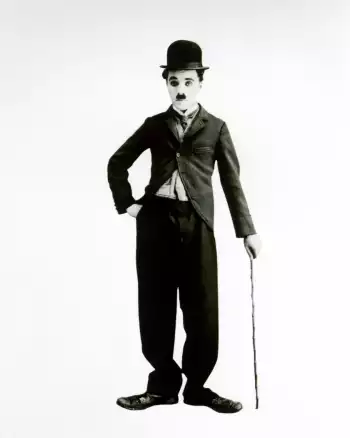
Silent comedy uses visual humor to tell a story. In the early days of film, before there was sound, it was the most popular form of storytelling. Silent comedians such Charlie Chaplin, Roscoe “Fatty” Arbuckle, Harold Lloyd, and Buster Keaton entertained millions with an art form that was simple and universal. Visual humor goes far beyond pies in the face and slipping on a banana peel. These filmmakers developed the technique of using gags to reveal character and tell a story.
Chaplin is the most famous of the bunch, renowned for his charm and physical abilities. Watch him being blown away by an Alaskan blizzard in the film “Gold Rush.” His escapades in “Modern Times” offer social commentary on the timely theme of humans’ fears of machines running their lives during the industrial revolution. Another great filmmaker of the silent era was Buster Keaton, whose most famous film was the Civil War movie “The General.” Like Chaplin, Keaton was both an actor and a director. While he shared Chaplin’s dexterity, his style offered contrast with a dead-pan expression and delivery.
When sound was invented for film, silent movies were upstaged by dialogue-driven humor. While the form was essentially dead, the style lived on in the “talkies.” We have seen many stories incorporate aspects of silent humor.
The “Mr. Bean” series is basically a silent comedy, though he mumbles in place of dialogue. The same can be said for the animated French film, “The Triplets of Belleville.” Peter Sellers’ character in “The Party” struggles silently, with only occasional dialogue, to interact with his environment and the other party guests. Jacques Tati had a similar style in “Mon Oncle,” where the charmingly awkward Monsieur Hulot is at odds with wealthy society.
Countless movies and TV shows have had moments of physical humor, sometimes used to lighten an otherwise sad moment. In the Italian film “Life is Beautiful,” the main character used physical comedy to amuse his son in a concentration camp in Germany, to keep his spirits up. The first act of “Wall-E” is essentially a silent comedy, endearing us to this sweet and lonely robot. Old cartoons are heavily influenced by visual gags, especially the timeless “Looney Tunes.” A perfect example is the coyote and roadrunner sketches, where the laws of physics are challenged in the coyote’s quest to eat the roadrunner.
There are occasional fully silent contemporary movies, such as Mel Brooks’ “Silent Movie,” and the recent Acadamy Award-winner “The Artist.” While both have brilliant moments of humor and artistry, they are more homage to silent films, done for novelty rather than a resurgence of the form.
One filmmaker who has really taken the baton in terms of innovation in physical humor is the martial arts action star, Jackie Chan. Chan learned from Chaplin, fused with his own style of acrobatic martial arts, resulting in many comedic sequences featuring Chan fighting with ladders, ties, clogs, and whatever else he can find to defeat his enemies.
While silent comedy will never be as popular as it once was, we still see its influence on many works of art today. So whether you are feeling nostialgic, or are interested in the evolution of comedy and visual storytelling, check out one of these timeless classics. They are simple, creative, and great for a laugh.
